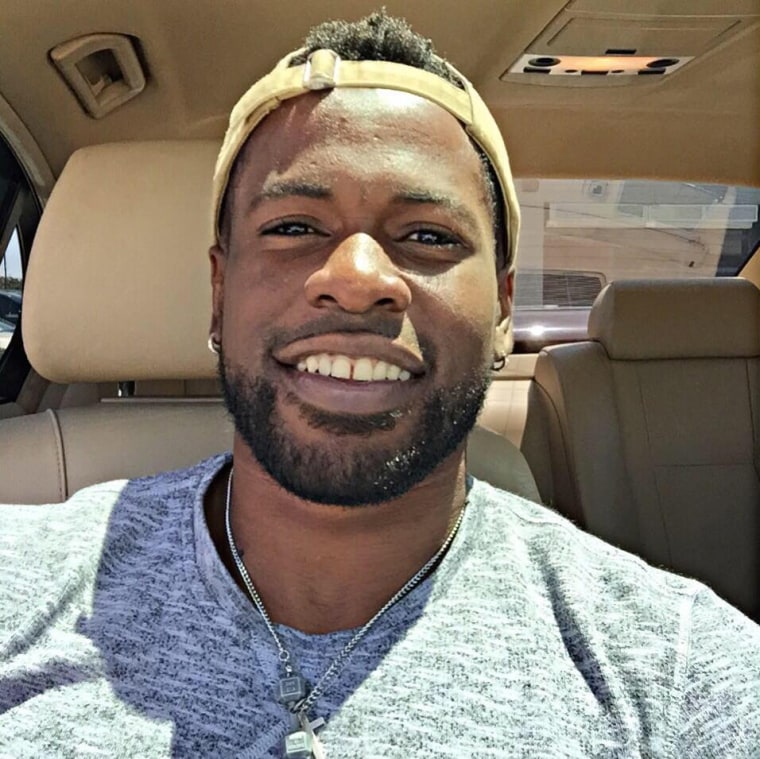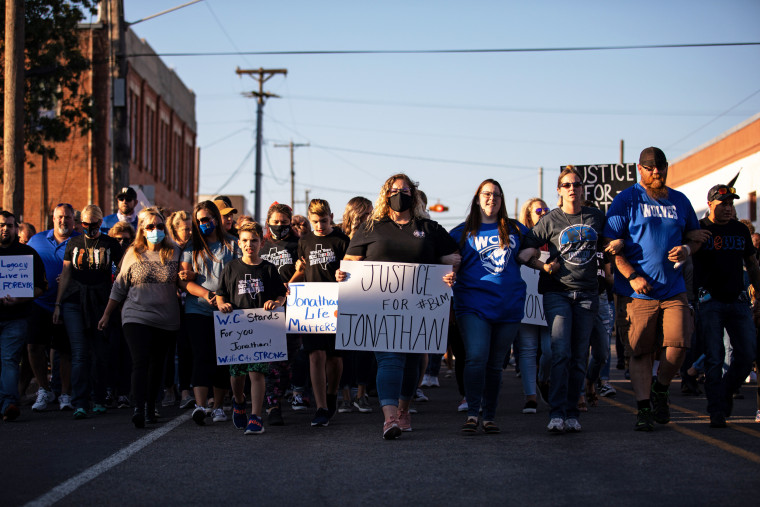The contours of this encounter are maddeningly familiar; the details are few, familiar and infuriating.
Jonathan Price was Black. Jonathan Price was at a gas station around 8 p.m. on a Saturday when he saw an apparent domestic dispute and intervened, reportedly diffusing the situation before a white police officer, Shaun Lucas, arrived in response to 911 calls about a disturbance Jonathan Price had already ended. After what seems to have been a short interval of time, that police officer first Tased and then shot Jonathan Price, who by all accounts was unarmed, engaged in no criminal activity, walking away and completely “non-threatening” (as determined by the Texas Department of Public Safety). Jonathan Price died as a result of his injuries.
As James Baldwin once wrote, “Nothing can be changed until it is faced.”

I looked at the account of the shooting and killing of Jonathan Price, 31, on Oct. 3 in Wolfe City, Texas, and I saw a murder; I was not alone. The Texas Rangers also saw evidence of murder, and charged Officer Lucas with it within 72 hours. They then issued an unusually strong initial report: “The preliminary investigation indicates that the actions of Officer Lucas were not objectionably reasonable.”
Police officers’ ideas of when it has been reasonable to shoot Black people have too often been objectionable, and rarely objectively reasonable.
This rare, nearly immediate arrest of a police officer for murder holds out the possibility of justice that many have not seen before; it is, however, of little lasting relief. First, because the arrest allows the media to move on quickly, as the next steps to achieve justice for Jonathan Price will not be as immediate as the arrest. But once the media has moved on, the fuller justice that Black folk seek — which is not merely the arrest, prosecution, conviction and (for some) imprisonment of one police officer, but a broader justice that pervades culture and society, allowing Black women, men and children to live without being subjected to police violence — will be harder to achieve without attention.
And finally, it will be of little lasting relief because this will not be the last time that a Black person is shot by a police officer — shot while unarmed, shot while moving away, shot while being nonthreatening, shot nearly immediately upon an officer’s arrival, shot while Black.
Jonathan Price’s posture was, according to the Texas Department of Public Safety, nonthreatening but his Blackness, and his physicality — he was a former college athlete and a personal trainer — were apparently not. The officer’s lawyer, in a statement, admitted that Lucas arrived at the scene, he immediately singled out Price for arrest and, when Price tried to move away, Tased and then shot him.
Jonathan Price was, in short, the embodiment of the Black man who is constantly demonized in American society: tall and muscular. He looked like the person the arriving officer thought would be the criminal, and so the officer treated him like one.
I am not alone in contending that it was Jonathan Price’s Blackness — arguably multiplied by his size — that apparently justified his shooting in the eyes of the person who pulled the trigger. His nonaggressive posture could not negate his Blackness, nor could his standing in his community, nor could the regard his pastor had for him, nor could his commitment to youth physical fitness, nor could his years of service working for his city. Lucas knew none of that; he apparently didn’t take the time to determine anything about the situation, let along the man standing before him. Lucas simply shot Jonathan Price as he was trying to walk away.
Video recordings of the encounter have yet to be released by either law enforcement or the owners of the convenience store, so there is still much to be clarified — including the perennial question in these cases of whether the officer fired because Jonathan Price walked away or because a Black man was deemed insufficiently obedient and compliant.
But in this country and the police culture it has spawned, Black folk — particularly Black men and even more particularly Black men of size — are perceived as threatening by simply existing. This is the often-unspoken element of these stories, whether it’s Trayvon Martin or Tamir Rice, Michael Brown or Laquan McDonald, Walter Scott or Rayshard Brooks, Stephon Watts or Elijah McClain, Jacob Blake or Jonathan Price. And though Black women and Black children are not immune from disproportionate police violence, within the kaleidoscope of Blackness, it is Black men who have been most virulently demonized, from the moment Western economies were founded on enslavement, as Kelly Brown Douglas powerfully articulates in “Stand Your Ground.”
This killing demonstrates that painting “Black Lives Matter” in end zones and at intersections is insufficient to address the often unarticulated perceptions of Black folk (and Black men in particular) that exist in this country, the fruit of systemic anti-Black bias infecting this nation and its institutions, combined with individual bias and individual racism. As Malcolm X observed, our very language codifies the use of the adjective “Black” to mean those things that are negative, undesirable and ugly. These perceptions are nurtured in media of all sorts and are passed down as cultural knowledge from one generation to the next.
At the heart of these perceptions is fear — fear of the Black person, who has been constructed as wholly other from white people and, for many, barely human. (We saw that in the description of Michael Brown by his killer as monstrous, “a demon.”)
As a nation, we will likely continue to see the unjustified, unprompted killing of Black women, men and children until we face our actual demons, which are of our own making: systemic bias and racism. Annotating and mourning each death is not enough. Protesting each death, each act of violence, each failure of the justice system is not enough.
Until white folk — in particular — face and name their deepest fears about Black folk and their own history of racial violence and subjugation (and that bill that is coming due), we as a society will see no change. The contours of the next encounter will be maddeningly familiar; the details will be few, familiar and infuriating.




